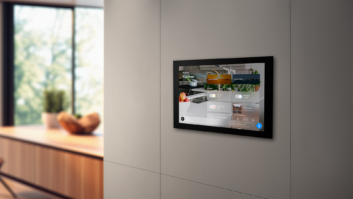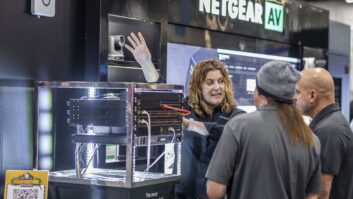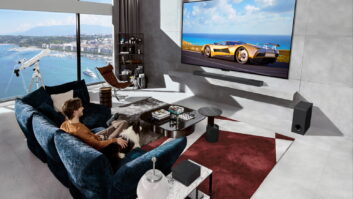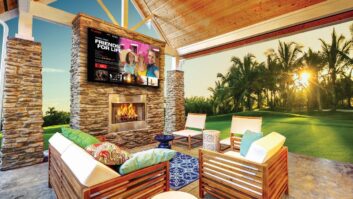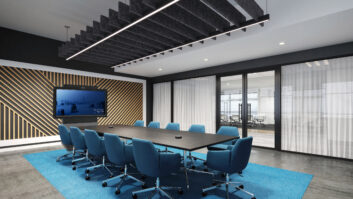Ari Supran, Lutron’s residential products marketing manager, gauges a product’s importance by watching closely the moment it fails. “If the movie doesn’t play, it is an inconvenience, but if the lights don’t work, it is a problem,” he said.
To Lutron and other companies, such as AMX, CentraLite, Control4, Crestron, LiteTouch, Soleil Shades, Somfy, and Vantage, lighting control is the most important subsystem in the CEDIA channel because it offers robust profit potential and immediately simplifies clients’ lives. Furthermore, every house that gets built in the U.S. today is a candidate, which some think scratches the $40 billion market.
Lighting control is not a new invention. Since the late 1950s, rotary dimmers have been a ubiquitous component of home dcor. After decades of R&D and breakneck technological progress, demand for lighting products is now stronger than ever, and innovations such as “natural light” control continue to raise the performance bar. The category now includes whole-house systems that manage artificial and natural light, shade and blind control, wireless RF-, IP-, and PC-based systems, and seamless integration with subsystems such as security, climate, and media.
Supran maintains that this evolving category is also one of the few to inspire symbiosis with architects and interior designers. “It is tied to profitability,” he said. “Besides the margins, which are healthy, many [of our dealers] work with architects and interior designers successfully, and then explore how that can snowball into a dedicated business.”
Tom Doherty is living proof. Based in Indianapolis, Indiana, Doherty’s company, Doherty Design Group LLC, is devoted specifically to lighting control. “I am exclusively focused on evangelizing lighting control and leveraging the trades that are already on the job site to act as my labor force,” he said.
A custom A/V dealer and manufacturer for two decades, Doherty took a brief hiatus to reflect on where he saw the most industry growth. During this break, in 2002, he decided to install a Lutron system into his own home and tapped the electrical contractor to perform high-voltage elements.
“For my own Lutron system, I created all the documentation and trained the electrical contractor on where to terminate the low-voltage side of the system, [and] manage cabling, interconnection, and address modules. Much of what typical A/V or Lutron dealers would do, I had my electrician do. I found that with explicit instructions that I gave, the Lutron system went off without a hitch.”
Doherty was so impressed with his personal experience that he created a “lighting control only” firm in November 2002. Since then, his unique model has proved wildly successful, and he is currently working on installations around the country.
As awareness of the category continues to grow, mid-market and mass-market interest is also increasing. As a comparison to lighting control’s growing popularity in production homes, Supran points to central air conditioning. “Twenty years ago, central air was not a standard feature in track homes, but now it is becoming more common. Similarly, the industry hopes to make lighting control a new standard,” he said.
A survey published in the 2004′ Autumn Edition of Home Builder Executive added further proof of Lutron’s popularity in the builder market. Purchasing executives from the nation’s leading custom home builders were quizzed on which suppliers/brands they currently use in their homes, and results indicated that 45 percent of those surveyed were integrating Lutron lighting controls.
New technologies, such as IP-controlled systems and Windows Media Center, are making it easier to specify and install smaller-scale projects, and manufacturers hope that they will broaden the general market. But, according to Doherty, most of these hot technologies are a mere fraction of the market. Products that make our blood pressure rise at trade shows are actually below the radar for most consumers, he contends.
“I keep my finger on the pulse of what is going on, but there isn’t necessarily one technology that is going to change business overnight,” Doherty stated. “Pay attention to your competitors and watch their successes and failures with these new technologies. Let them take the arrows.”
Control4’s CEO, Will West, disagrees. “Homes are going IP; it will happen,” he stated. “And Control4 is all IP-based. It is what we do. Whether it is multi-room audio, lighting, or anything else, we are all about using IP-based systems.”
According to West–co-founder of STSN, the hospitality industry’s dominant plug-and-play IP technology, and PHAST, the residential control system–the salient challenge for today’s custom dealer is that he or she does not understand IP and will not be prepared for market evolution. To fully equip its dealers, Utah-based Control4 requires comprehensive IP training. “The more training we do, we see more clearly how limited IP exposure is for dealers,” West added. “So we just enhanced our training. My partners and I started STSN, so we came into this industry with the thought to make IP in the home easier. We are doing a good job, but there is a need for some basic fundamental understanding, so we definitely train our dealers for that.”
Dealers interested in installing Control4 aren’t required to be “network guys,” West reassures. Rather, dealers must be competent at their specific trade. “We think that this market is so big we won’t mess it up by adding another quality dealer, as by adding someone who doesn’t know what he or she is doing. Careful market development is important, and from our perspective, that is contingent on expertise.”
Control4 makes “smart” lighting switches to replace existing switches for new construction or retrofit projects. They are completely wireless, demanding no new wires or home-run installations, and cascade into an 802.15.4-based (or Zigby), IEEE-standard mesh network. Every time a new switch is added, the network gets stronger. “Our focus is on the broad market and a design that allows people to upgrade with their current home or a new home, one piece at a time,” West stated. The Control4 lighting control line is slated to ship early this month.
When thinking about selling light control, the first thing that occurs to Brenda Colwell of Artistic Systems, a custom installation firm in Telluride, Colorado, is eliminating the eyesore of white light switches that corrupt the dcor of just about every home. Colwell believes that Control4’s smart wireless line will make it easier to end these repeat aesthetic assaults.
“We work in homes that are stucco or log–perhaps without crawl spaces–and you can’t put in wiring after project completion. Or there is the expense of ripping out dry wall and replacing it. So that is why Control4 is attractive to us, because it may allow us to enter a market that would we would otherwise be unavailable because the house is done,” Colwell said.
The team at Artistic Systems now has the option of adding modules to ancillary units such as lamps or fountains, then control everything without running complicated wire. “[Control4] is also attractive to us because it is priced incredibly low compared to the traditional lighting control companies,” Colwell added.
Another important trend in the residential lighting market was illuminated at CES in January, when Lutron introduced a device that controls its RadioRA dimming system through Microsoft Windows XP Media Center Edition 2005.
The RadioRA Network Control Interface, which is now shipping, allows control of up to 15 rooms or scenes (or individual dimmers) through a PC running Media Center Edition 2005 via remote control. It can be added to any existing RadioRA home dimming system that has a RadioRA RS-232 interface or a Chronos system bridge and timeclock. The interface is linked to a home network via Ethernet and sells for $400.
No matter how revolutionary new products may seem, Tom Doherty thinks that the next big thing isn’t new at all. “I have been around in technology for two decades as a dealer and a manufacturer,” he said, “and technology isn’t what drives me. The next big opportunity is actually customer service. Being more efficient and making customers happy. All these technologies make our lives easier, but to succeed we simply need to focus on making customers happy, and do what we promise. Then, everything takes care of itself.”
Margot Douaihy is managing editor of Residential Systems in New York City.


